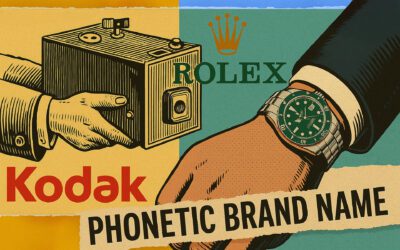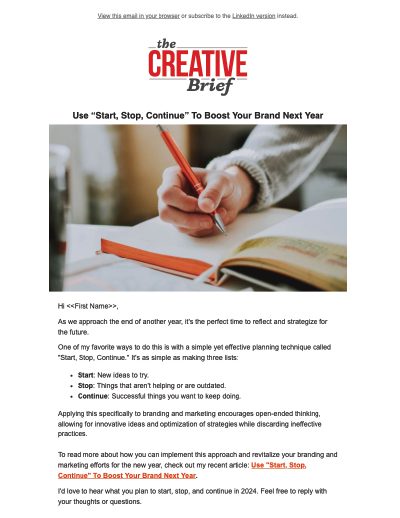In the first part of this two-part series, I talked about brand cultures that focus on performance, those that are restless for change, freeform cultures and those that learn fast and continue to evolve.Understanding the type of branded culture you are trying to change is critical, because no culture is serendipitous. It evolves from the mindsets, habits and viewpoints of those who made it the way it is. Equally, change will be dictated by the willingness of those involved to change.
I’ve always argued that changing a culture requires working with its pervading biases to the greatest extent possible. If you are looking to change or adjust a performance culture, for example, work with the competitiveness that is inherent in that culture rather than trying to work against it. So much cultural transformation fails I believe because those seeking to change a culture try to impose an ideology that simply doesn’t align with the dominant characteristics. Some will say that is what cultural transformation is: taking a brand’s culture, breaking it down and rebuilding it. I beg to differ, and the failure rates around corporate cultural change would suggest that, at the very least, a different approach is well worth considering.
With that in mind, here are four more of eight different brand cultures I’ve encountered and some thoughts on what it takes to successfully achieve enduring change in each of these environments.
5. Purpose Culture – driven by a need to change the world. Dominant once in challenger brands and ethical brands, but increasingly becoming mainstream as corporate brands catch onto the galvanizing power of focusing their people on a big idea. These cultures are highly motivated because they have a clear ‘wrong’ that they are intent on righting. You’ll find these brand cultures across many sectors, particularly those where the mainstream incumbents are seen as out of step or in areas where there are opportunities to fly the flag for democratizing access. Three things can do serious harm to a branded culture that is purpose driven. It becomes too successful for its own good, and therefore loses much of the energy and ambition that powered it. It can become so absorbed in what it is doing that it loses the plot competitively. Or people within the organization can decide to over-share their evangelism, lecturing those that they see as disagreeing with them or who they regard as obstructive, including the brand’s own customers. In their book On Purpose, Shaun Smith and Andy Milligan share the story, for example, of Virgin Atlantic firing 13 crew members after they posted rude comments about passengers. The great strength of purpose-driven brand cultures – their impatience for change – is also their potential weakness unless handled well. Refocusing is best achieved by a shift in target, preferably to something even bigger and more ambitious, leveraging off a sentiment that ‘our work here is done’.

6. Start Up Brand Culture – the culture that defines the brand. There’s a romance and defiance to the best start-ups that most CMOs would love to bottle. To me, that aspect of a brand culture is seldom the issue. The small number of people, the huge workloads, the odds against success, the pressures of investors and the belief that they have something that will change the world combine to give those start-ups that make it the gumption and vision to pull together as a team. Where things become difficult is when the growth sets in. As the brand incorporates more systems and processes, perhaps increases its footprint and learns the meaning of success, hesitation becomes more normal. The impulsive early days are replaced by broader and slower decision making, the rise of silos, politicization and a tendency to take less risk. All of this can combine to make the brand culture more obstructive, less enjoyable and less motivated. The key with any start-up as it grows up is to insist that the characteristics that built the company stay with the brand; and that it embraces those defining tenets to address its growing problems, rather than abandoning them in order to grow. That may sound relatively straight-forward, but in reality it’s difficult because it requires those coming aboard to ‘learn’ what the brand was while adding to what the brand is. I’m always bemused by the fact that start-up brands seem too eager to abandon their history as they grow while established brands don’t seem eager enough. Two questions I like to ask of start-up brands that are evolving to the next phase in their culture are these: What motivated you to start in the first place? And where do you continue to put all that energy?
7. Personality-Powered Culture – shaped by the style, manner and priorities of a leader. These people exert such an influence over their organizations that they drive and shape the entire culture. This can be a hugely positive force for good – think Walt Disney or Coco Chanel. But when a brand revolves so much around one person and the brand they envisage, it can, in the wrong hands, stifle innovation and change. People and their visions underpin some of the most powerful brand stories. Great brands leverage the charisma and vision of these leaders to hold the brand together, but continuing to interpret the founder’s vision or that of a great leader after they have left is something many cultures grapple with. Too often, they lapse into preservation – failing to change because of a reluctance to move on from what has been a tradition for too long. The secret to driving such a culture forward is not dissimilar to that of the start-up brands given above. It’s about holding the organization accountable to what made the brand famous and continuing to evolve how the culture works and thinks. There was a great piece by James Allen and Christopher Zook last year in which they talked about the need for organizations to keep their founder spirit. To do that, more brands need to disperse that thinking beyond their leadership and into the very marrow of their culture so that everyone feels encouraged and motivated to think like an entrepreneur.
8. Lean Culture – these are brands that need to keep pushing down costs in order to thrive. Often they are in sectors characterized by high volumes and low margins, such as wholesalers, big box retail and many intermediaries for example. There’s a tendency to see such brand cultures as people-unfriendly. Brands such as WalMart have taken a lot of flak over the years for the demands they make on staff and suppliers alike because of their propensity for driving out cost anywhere they can. But brands like Costco have also shown that lean cultures can be effective and humane. It all comes down to where you put your priorities. Lean brand cultures that see people as costs will look to automate and standardize in order to hit their bottom lines. Lean brand cultures that see people as assets will look to do the exact opposite: treat their people as a resource for extracting more value out of how the business works. Happiness, motivation and support may seem like fluffy qualities in sectors where price and margin dominate so many of the conversations, but the secret to making these cultures work is recognizing that change from within rather than from above will be most successful. I’m a huge advocate for little changes when looking to move lean cultures – because the cumulative effect of so many tweaks can be significant and people feel like they have control and that they are bringing the change about themselves. But there’s a flip side to this success as well: getting everyone to understand and embrace the pricing, and encouraging a straight-shooting culture where no-one is scared to tell the truth. When people feel they have a future, but they also know what the business needs to achieve in order for there to be a future, it quickly generates a powerful sense of ownership.
Perhaps some of you will be thinking that your culture has elements of several of these cultural types, and therefore it’s hard to pinpoint where you should focus in order to achieve meaningful change. My recommendation is that you look for two things: the characteristics of your culture that drive the greatest and most successful change; and those that hold the brand back and prevent it achieving its potential. If you can, draw on the first to address the second.
Paid, Earned, Shared, Owned: The PESO Media Mix That Builds Brands
Paid, earned, shared, and owned media make up the core mix of modern brand marketing. When these four channels work together, they create visibility, credibility, and long-term growth—helping small businesses and solopreneurs build stronger brands.



